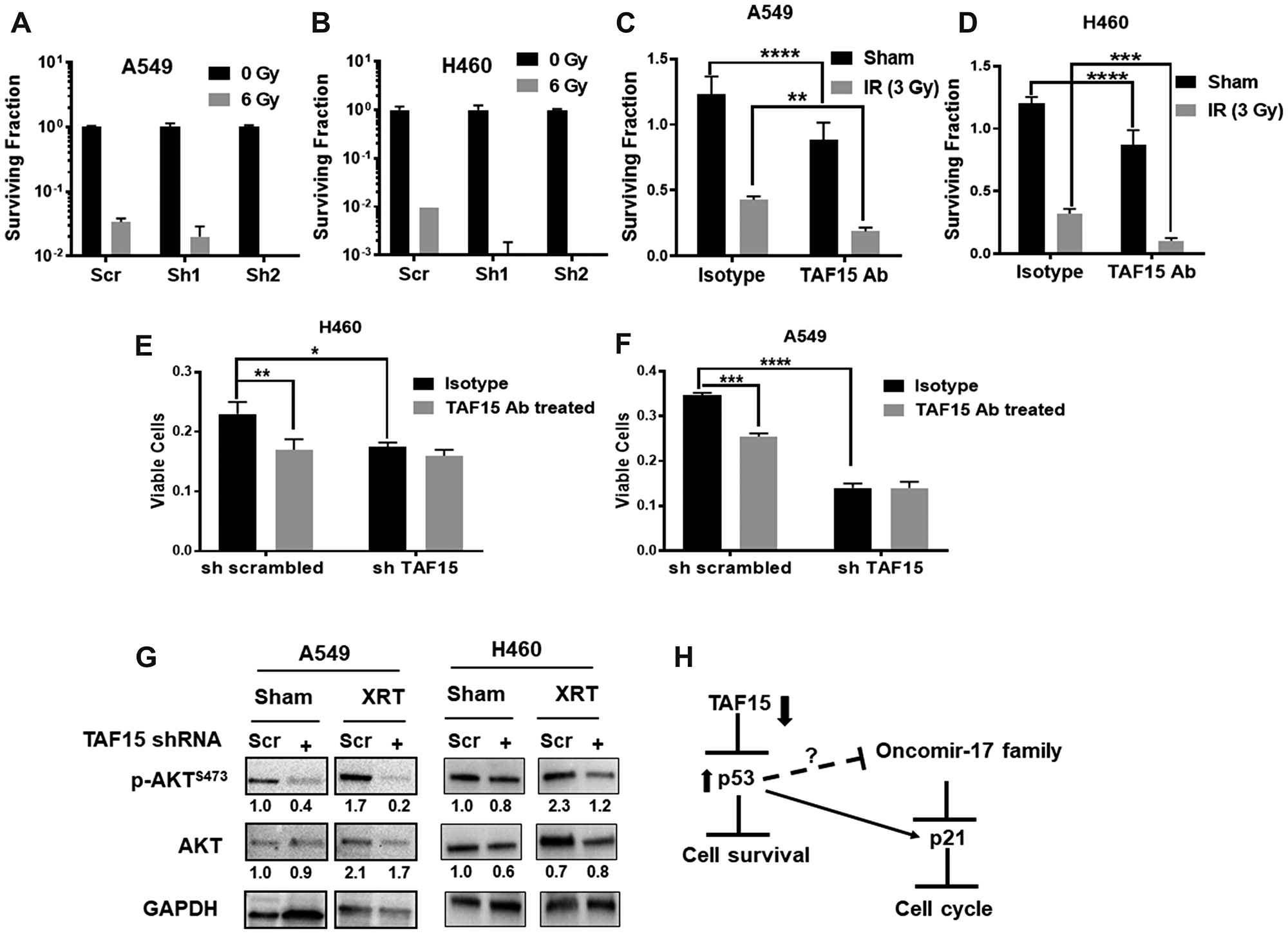Oncotarget recently published "ETAF15 contributes to the radiation-inducible stress response in cancer" which reported that genetically silenced TAF15 which led to a significant reduction in proliferation of NSCLC cells.
Cells depleted of TAF15 exhibited cell cycle arrest and enhanced apoptosis through activation and accumulation of p53. In combination with radiation, TAF15 knockdown led to a significant reduction in the surviving fraction of NSCLC cell lines.
To determine the importance of TAF15 surface expression, they targeted TAF15 with an antibody.
In combination with radiation, the anti-TAF15 antibody led to a reduction in the surviving fraction of cancer cells.
These Oncotarget studies show that TAF15 is a radiation-inducible molecular target that is accessible to anti-cancer antibodies and enhances cell viability in response to radiation.
These Oncotarget studies show that TAF15 is a radiation-inducible molecular target that is accessible to anti-cancer antibodies and enhances cell viability in response to radiation.
Dr. Dennis E. Hallahan from The Washington University in St. Louis said, "Resistance to therapy is a significant challenge during the treatment of non-small cell lung cancer (NSCLC)"
They identified TATA-box-binding protein-associated factor 15 as one protein that is expressed on the surface of NSCLC cells following irradiation.
Under normal conditions, TAF15 controls cellular viability through the regulation of cell cycle and cell death-related genes.
A previous study showed that human antibody PAT-BA4 that recognizes a variant of cell surface TAF15 inhibits cancer cell motility and cell adhesion in stomach cancer and melanoma.

Figure 6: TAF15 silencing and anti-TAF15 antibody treatment sensitize NSCLC cells to radiation. (A–B) Colony formation assay performed on TAF15 knockdown cells. Representative bar grpahs at 6Gy showing log10 surviving fraction are plotted. The silencing of TAF15 sensitizes A549 cells (A) and H460 cells (B) to radiation. C-D Anti-TAF15 antibody treatment inhibits the proliferation of A549 (C) and H460 (D) cells and sensitizes them to radiation. Bar diagram showing the surviving fraction of A549 and H460 after TAF15ab in combination with 3Gy radiation. (E–F) TAF15 knockdown abrogates the effect of the TAF15 antibody on cell proliferation. A549 and H460 cells having TAF15 knockdown were treated with TAF15 antibody or isotype control and cell proliferation was evaluated by trypan blue dye exclusion assay at 96 h. Shown are the mean percentages of proliferating cells relative to the isotype treated scramble control. Mean, and SD represents three independent experiments. *p < 0.05, **p < 0.01, ****p < 0.0001. (G) Western blot analysis for the expression of p-AKT (Ser473) and total AKT protein levels. Densitometry analysis was performed using the ImageJ software, and the numbers below the blots represent densities normalized to GAPDH (loading control). (H) Proposed mechanism of TAF15's response to radiation in NSCLC. TAF15 knockdown leads to upregulation of p53 tumor suppressor which inhibits cell survival. P53 upregulates p21 that leads to cell cycle arrest.
In the present study, the Oncotarget authors found that IR enhanced the surface expression of TAF15 in NSCLC cell lines.
They studied the effect of anti-TAF15 antibody on cells with surface associated TAF15, and its impact on cell survival when combined with IR.
The Hallahan Research Team concluded in their Oncotarget Research Article that, TAF15 is a radiation-inducible molecular target for the development of anti-cancer antibodies.
Blocking TAF15 with an antibody is a feasible approach to enhance the cytotoxicity of radiation in NSCLC.
This targeting approach may lead to improved outcomes in NSCLC with enhanced expression of TAF15.
DOI - https://doi.org/10.18632/oncotarget.27663
Full text - https://www.oncotarget.com/article/27663/text/
Correspondence to - Dennis E. Hallahan - [email protected]
Keywords - TAF15, radiation inducible, lung cancer, antibody
About Oncotarget
Oncotarget is a biweekly, peer-reviewed, open access biomedical journal covering research on all aspects of oncology.
To learn more about Oncotarget, please visit https://www.oncotarget.com or connect with:
SoundCloud - https://soundcloud.com/oncotarget
Facebook - https://www.facebook.com/Oncotarget/
Twitter - https://twitter.com/oncotarget
LinkedIn - https://www.linkedin.com/company/oncotarget
Pinterest - https://www.pinterest.com/oncotarget/
Reddit - https://www.reddit.com/user/Oncotarget/
Oncotarget is published by Impact Journals, LLC please visit http://www.ImpactJournals.com or connect with @ImpactJrnls
Media Contact
[email protected]
18009220957x105



